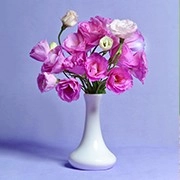Banana Flower Wonders

The banana tree, renowned for its delicious fruit and towering stature, also boasts a lesser-known marvel: its striking flower. Often overshadowed by the tree’s fruit, the banana flower is a vital part of the plant's life cycle and offers a range of uses and benefits that are worth exploring.
Structure and Appearance
The banana flower, also known as the banana blossom, is a unique and complex structure. Emerging from the heart of the banana plant, the flower is encased in a deep purple or red bract that resembles a large, elongated leaf. As the flower matures, it reveals a series of creamy or yellowish petals, which are packed with tiny, delicate flowers. These small flowers are arranged in clusters, each contributing to the development of the fruit.
Bring greenery indoors with these 10 shade-loving bonsai trees for a lively space!
Stay vigilant in spring and summer to avoid the dangers of poisonous mushrooms while foraging.
Lilac: beautiful, fragrant, and symbolic—a timeless romantic legend in the garden!
Do you know a single tree can reveal the secrets of an entire forest's health?
The record for the tallest sunflower has been surpassed multiple times, with some reaching over 30 feet tall.
Want Stunning Tulips? Here’s How We Care for Them at Home!
The banana flower's size and shape are impressive. It can grow up to 30 cm (12 inches) long and has a tapered, conical appearance. The bracts that cover the flower are initially tightly closed but gradually open up as the flower develops. This gradual unveiling reveals a cluster of small, edible florets, each destined to become a banana if fertilization occurs.
Life Cycle and Pollination
The banana flower plays a crucial role in the banana tree's reproductive process. The flowering stage is an essential part of the plant’s life cycle, marking the transition from the vegetative to the reproductive phase. Banana plants are generally hermaphroditic, meaning each flower contains both male and female reproductive organs. However, the banana plant often relies on pollination to ensure successful fruit development.
Pollination of banana flowers can be achieved through various methods. In the wild, banana plants are pollinated by insects such as bees and butterflies. However, in cultivated settings, wind and human intervention often play a significant role. Some banana varieties are parthenocarpic, meaning they can produce fruit without fertilization, but others require pollination to develop properly.
Culinary Uses
The banana flower is not only a marvel of nature but also a versatile ingredient in various cuisines. In many parts of the world, particularly in Southeast Asia, the banana flower is a prized component of dishes. Its taste is mildly sweet with a slightly bitter undertone, making it a unique addition to salads, soups, and stir-fries.
One of the most popular ways to prepare banana flowers is to cook them. The flower is often sliced thinly and sautéed with spices and herbs. It can also be used in curries and other savory dishes. In some cultures, the flower is pickled or preserved to be used throughout the year.
In addition to its culinary uses, the banana flower is celebrated for its nutritional value. It is rich in vitamins and minerals, including vitamin A, vitamin C, potassium, and iron. It is also a good source of dietary fiber, which aids in digestion and promotes overall health.

Medicinal Properties
The banana flower has been traditionally used in various medicinal practices. In many cultures, it is believed to have health benefits, particularly for women's health. For example, it is often used to treat menstrual disorders and improve reproductive health. The flower’s rich antioxidant content is thought to help combat oxidative stress and inflammation.
Additionally, the banana flower is used in traditional medicine to manage blood sugar levels and support heart health. Its high fiber content can help regulate cholesterol levels and improve cardiovascular function. However, it is essential to consult with a healthcare professional before using banana flowers for medicinal purposes, as individual health needs and conditions vary.
Cultural Significance
Beyond its practical uses, the banana flower holds cultural significance in many regions. In countries like India and Thailand, the banana flower is an integral part of traditional ceremonies and festivals. It is often used in pious offerings and as a symbol of prosperity and fertility.
The banana flower’s unique appearance and vibrant color make it a popular choice for decorative purposes as well. It is used in floral arrangements and as an element in traditional crafts and artwork. Its presence in cultural practices highlights the deep connection between people and the natural world, reflecting the reverence for plants that provide sustenance and beauty.
Environmental Impact
The banana flower also plays a role in the ecosystem. As part of the banana plant, it contributes to the plant's ability to produce fruit and reproduce. The flower's development and eventual fruiting support the local wildlife, providing food for various animals and insects.
Additionally, the banana plant itself is known for its environmental benefits. It helps in soil stabilization and provides habitat for a range of organisms. The banana flower, as a part of this system, contributes to the overall health and balance of the environment.
The banana tree's flower is a remarkable component of one of the world’s most beloved plants. Its intricate structure, culinary versatility, medicinal properties, cultural significance, and environmental impact make it a true marvel of nature. Whether you are enjoying its flavor in a dish, appreciating its role in traditional practices, or marveling at its beauty, the banana flower is a testament to the fascinating world of botanical wonders.

 · Plant Team
· Plant Team